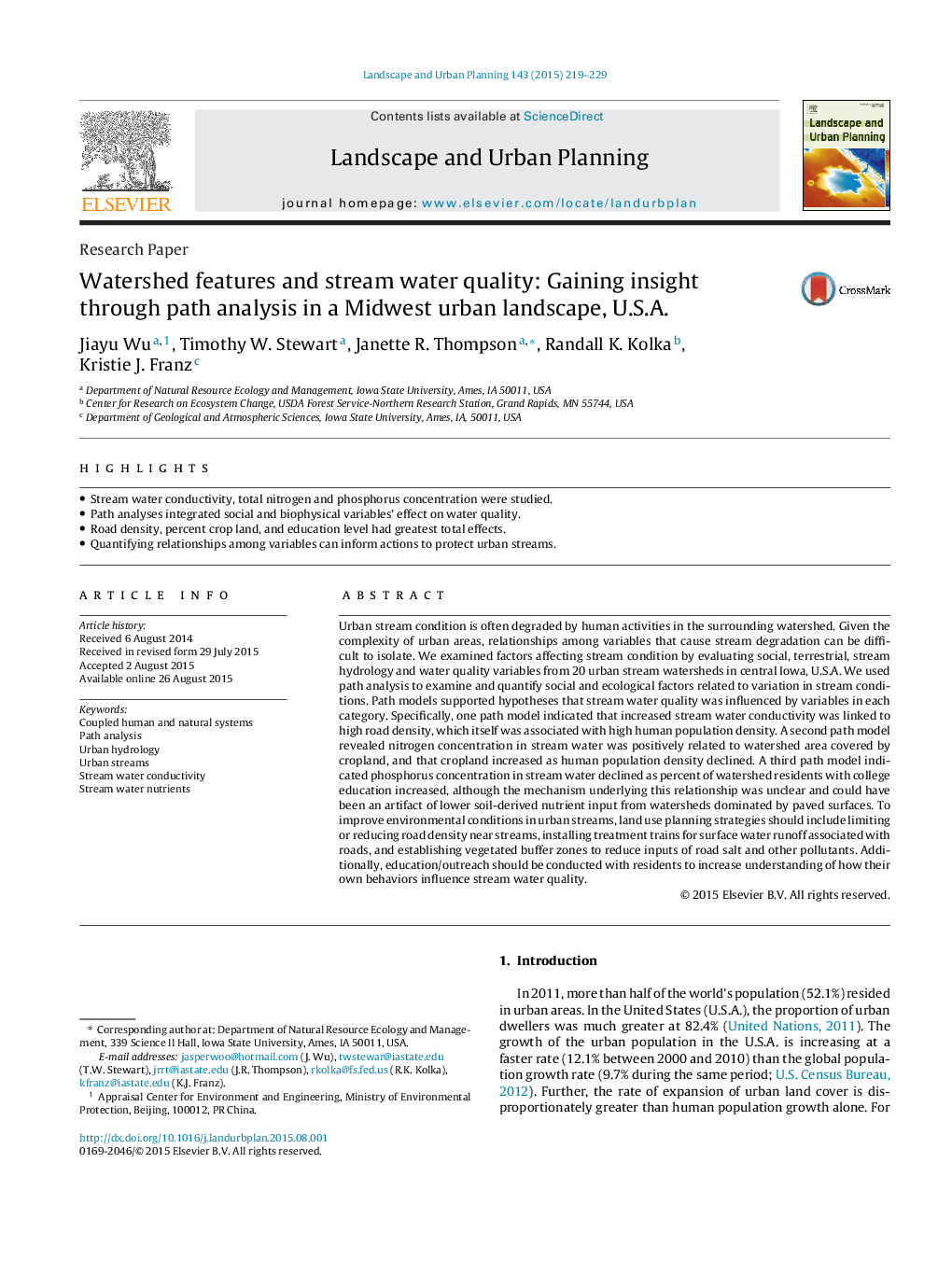| Article ID | Journal | Published Year | Pages | File Type |
|---|---|---|---|---|
| 7461059 | Landscape and Urban Planning | 2015 | 11 Pages |
Abstract
Urban stream condition is often degraded by human activities in the surrounding watershed. Given the complexity of urban areas, relationships among variables that cause stream degradation can be difficult to isolate. We examined factors affecting stream condition by evaluating social, terrestrial, stream hydrology and water quality variables from 20 urban stream watersheds in central Iowa, U.S.A. We used path analysis to examine and quantify social and ecological factors related to variation in stream conditions. Path models supported hypotheses that stream water quality was influenced by variables in each category. Specifically, one path model indicated that increased stream water conductivity was linked to high road density, which itself was associated with high human population density. A second path model revealed nitrogen concentration in stream water was positively related to watershed area covered by cropland, and that cropland increased as human population density declined. A third path model indicated phosphorus concentration in stream water declined as percent of watershed residents with college education increased, although the mechanism underlying this relationship was unclear and could have been an artifact of lower soil-derived nutrient input from watersheds dominated by paved surfaces. To improve environmental conditions in urban streams, land use planning strategies should include limiting or reducing road density near streams, installing treatment trains for surface water runoff associated with roads, and establishing vegetated buffer zones to reduce inputs of road salt and other pollutants. Additionally, education/outreach should be conducted with residents to increase understanding of how their own behaviors influence stream water quality.
Related Topics
Life Sciences
Agricultural and Biological Sciences
Ecology, Evolution, Behavior and Systematics
Authors
Jiayu Wu, Timothy W. Stewart, Janette R. Thompson, Randall K. Kolka, Kristie J. Franz,
